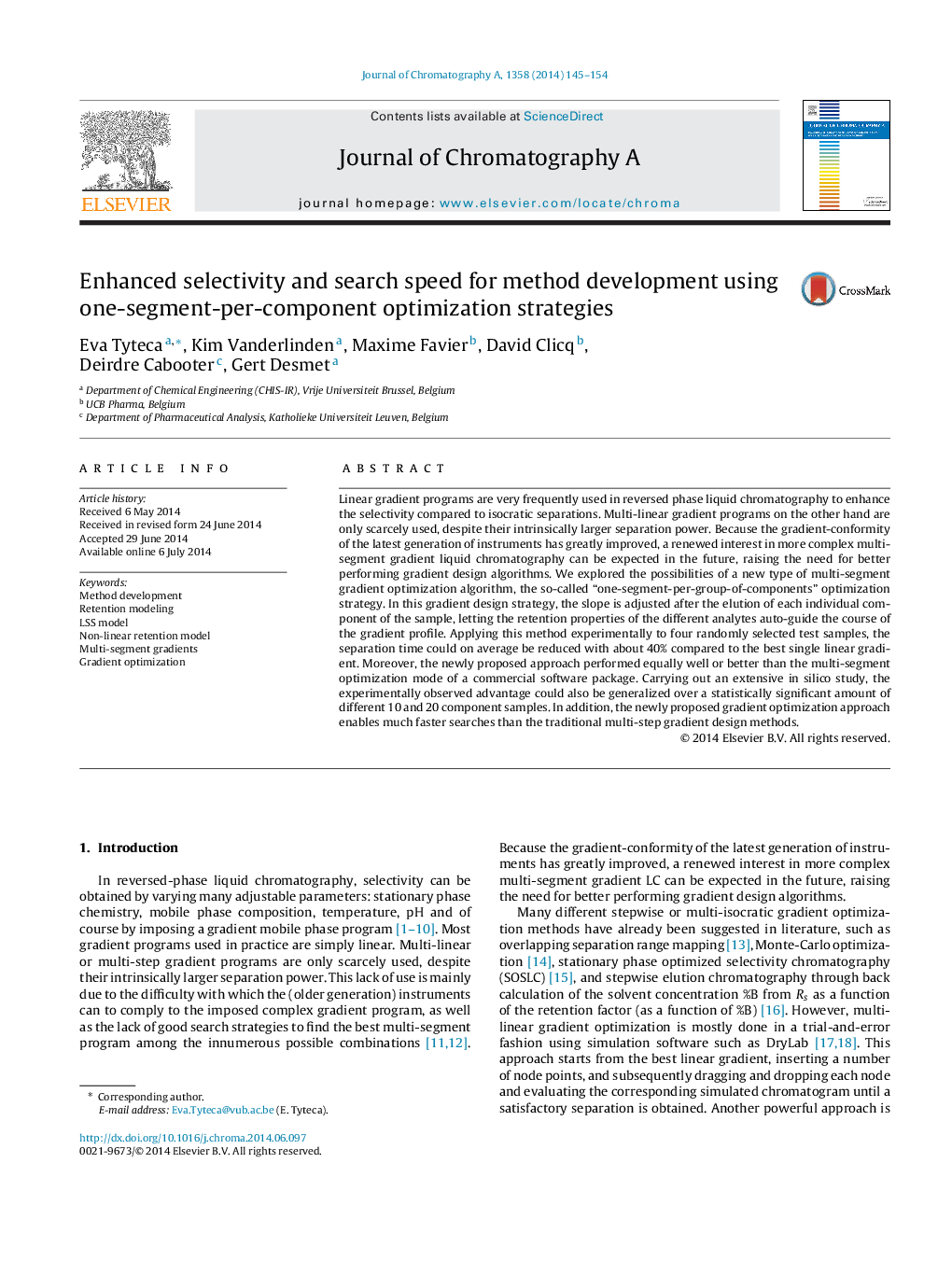| Article ID | Journal | Published Year | Pages | File Type |
|---|---|---|---|---|
| 7612719 | Journal of Chromatography A | 2014 | 10 Pages |
Abstract
Linear gradient programs are very frequently used in reversed phase liquid chromatography to enhance the selectivity compared to isocratic separations. Multi-linear gradient programs on the other hand are only scarcely used, despite their intrinsically larger separation power. Because the gradient-conformity of the latest generation of instruments has greatly improved, a renewed interest in more complex multi-segment gradient liquid chromatography can be expected in the future, raising the need for better performing gradient design algorithms. We explored the possibilities of a new type of multi-segment gradient optimization algorithm, the so-called “one-segment-per-group-of-components” optimization strategy. In this gradient design strategy, the slope is adjusted after the elution of each individual component of the sample, letting the retention properties of the different analytes auto-guide the course of the gradient profile. Applying this method experimentally to four randomly selected test samples, the separation time could on average be reduced with about 40% compared to the best single linear gradient. Moreover, the newly proposed approach performed equally well or better than the multi-segment optimization mode of a commercial software package. Carrying out an extensive in silico study, the experimentally observed advantage could also be generalized over a statistically significant amount of different 10 and 20 component samples. In addition, the newly proposed gradient optimization approach enables much faster searches than the traditional multi-step gradient design methods.
Related Topics
Physical Sciences and Engineering
Chemistry
Analytical Chemistry
Authors
Eva Tyteca, Kim Vanderlinden, Maxime Favier, David Clicq, Deirdre Cabooter, Gert Desmet,
